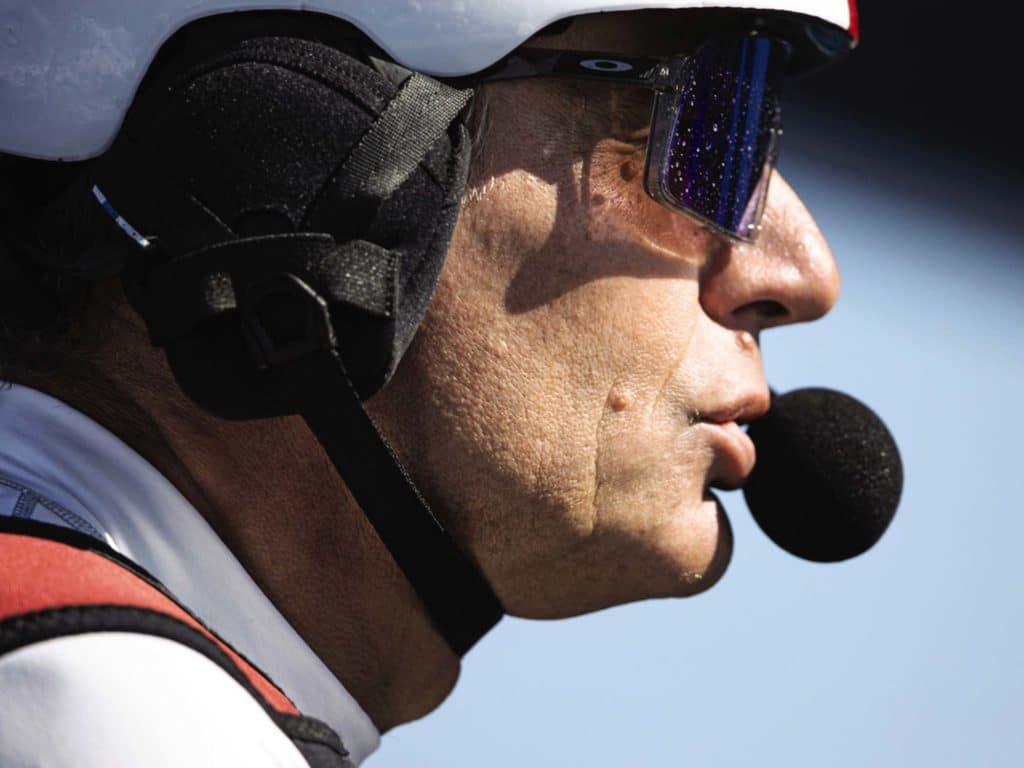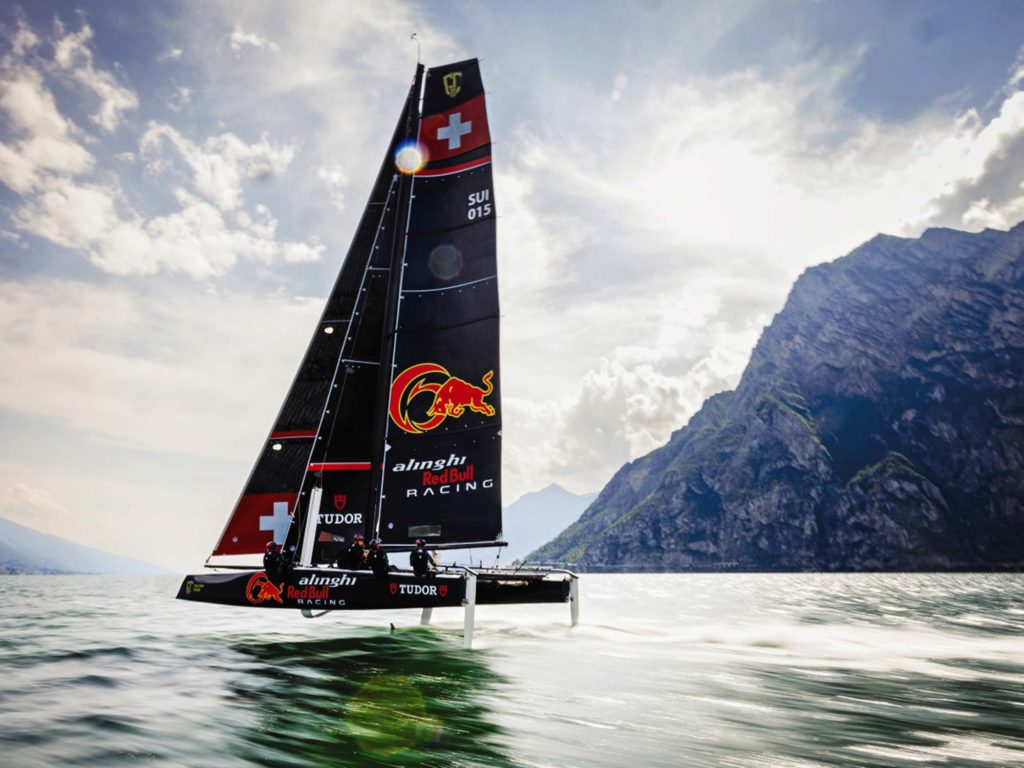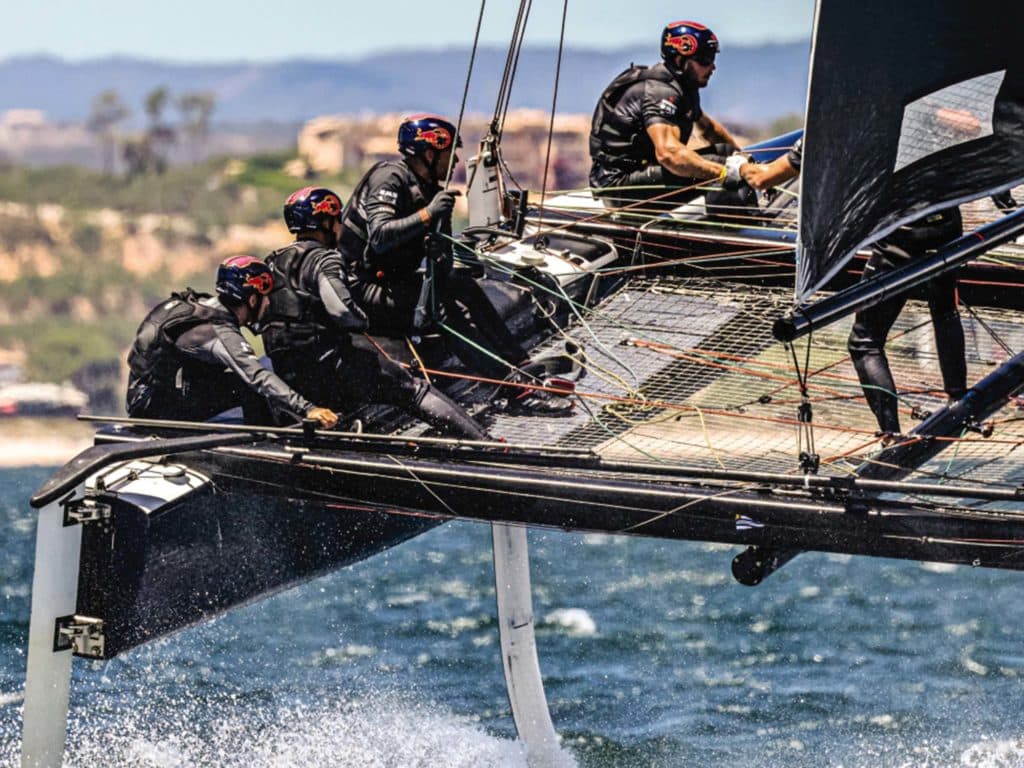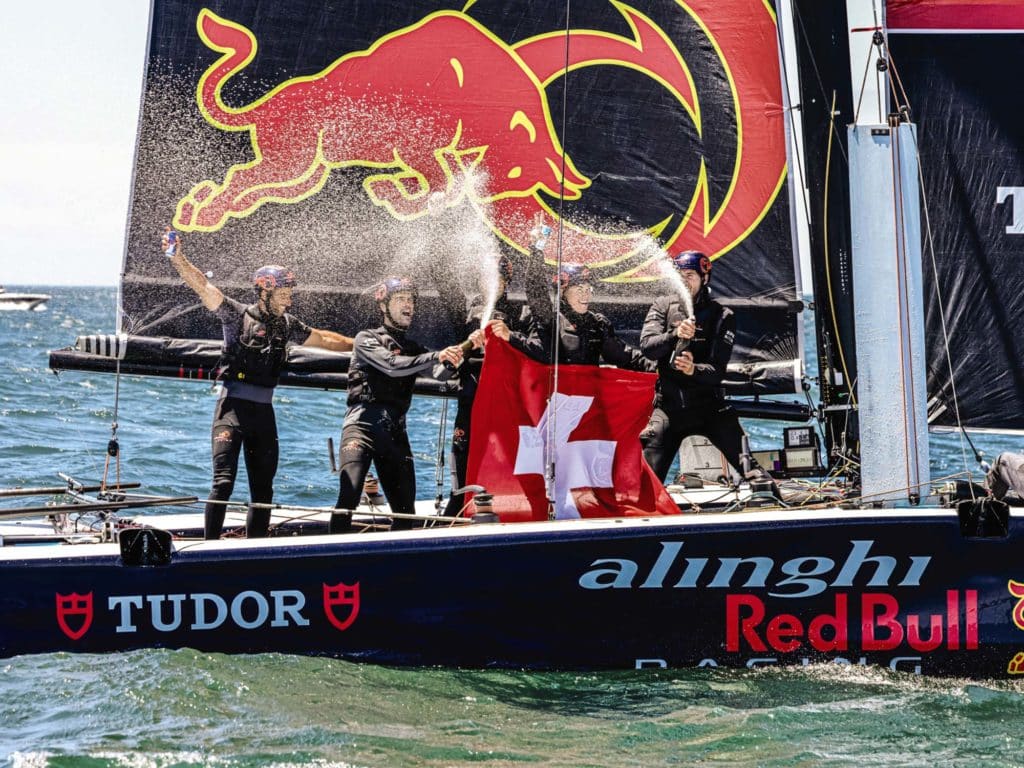
The return of Switzerland’s two-time winning syndicate, Alinghi, to the America’s Cup has significantly upped the ante for the 37th edition of yacht racing’s oldest and most revered international competition scheduled to take place in Barcelona in the winter of 2024.
The Swiss outfit led by billionaire businessman and sailing fanatic Ernesto Bertarelli famously won the 31st edition in 2003 in Auckland against Team New Zealand. It went on to defend it successfully against the Kiwis in Valencia in 2007 before losing against the American BMW Oracle Racing in the notorious monster multihull Deed of Gift match in Valencia in 2010.
That loss saw Bertarelli step away from the America’s Cup for the next three editions—San Francisco, Bermuda and Auckland—but it was well-known in his circles that he had not lost interest and was keeping a close eye on how the Cup was evolving. Now, with the Cup entering its second go-around in the spectacularly high-tech AC75 class, he has decided the time is right for the popular syndicate to make a return as Alinghi Red Bull Racing.
From the outside at least, this latest Swiss America’s Cup challenge appears to differ significantly from the previous iterations of the team. Aside from a high-profile technology partnership with Red Bull Advanced Technology (a sister company to the current Formula 1 motorsport champions, Red Bull Racing) the syndicate is fielding an unashamedly Swiss-centric sailing team lineup. That’s a very different scenario to previous campaigns, when the sailing teams were made up largely of foreign sailors—including a significant contingent from New Zealand.

Prominent among those Kiwi sailors in the Alinghi afterguard back then was tactician and subsequently skipper Brad Butterworth, who also now plays an integral part in the burgeoning Alinghi Red Bull Racing campaign.
Butterworth—who now lives close to Bertarelli in Switzerland—confirms that the pair had discussed in earnest the merits of each of the last three America’s Cup cycles and says the Swiss syndicate was close to challenging for the 36th America’s Cup in Auckland.
“Ernesto has been looking to do the Cup for a few cycles now,” he says. “I live just down the road from him, and obviously we are friends, so each cycle I would do a little project for him in terms of how we might go about it.
“In Bermuda, he was pretty excited about it, but then they changed the boats, and everything got difficult with COVID. This time, he had had enough of waiting, and he wanted to have a go.”
With that decision made, Butterworth says filling the key management-team roles was the first priority.
After a stint with the New York Yacht Club American Magic syndicate in the last edition, Alinghi veteran Silvio Arrivabene was drafted back as technical director in charge of “all things relating to the boat,” Butterworth says.
Arrivabene shares overall management of the team with Pierre-Yves Jorand (sport, sailing team, performance) and Michel Hodara, an Alinghi and America’s Cup management veteran, who will look after everything else, including marketing, sponsors and administration. Meanwhile, Butterworth sits on an oversight board along with Bertarelli and two representatives of Red Bull.
“I am involved with the sailing-team side of it,” he says. “I look at how we are going to get ourselves organized and what we have to do to get to a level where we can actually have a shot at taking the title.
“I am involved in most of the decisions that happen and privy to everything, but there are a lot of really good people there, and so I don’t have to get involved with everything. There are a lot of guys in there that I have known for many years, and we are trying to create the same sort of team feel that we had in the past with this group.”

When it came to picking a designer, Butterworth says choosing Marcelino Botin was a no-brainer. Botin comes with plenty of America’s Cup experience, having been the principal designer for Team New Zealand from 2004 to 2011 and in the same role with American Magic in 2021.
“I have raced against his boats all through my career,” Butterworth says. “He brings a fantastic group of people with him too, so we now have a great setup with the design team, and we have tried to maintain the same concept as Alinghi of old, where the sailors and the designers are closely involved with each other and have a real close team ethic.”
Backing up that design effort is the extra resource available from Red Bull Advanced Technology, which Butterworth says he sees as an integral part of the campaign.
“They are an integral part of the team, and there is an open-door policy, so I really don’t see any difference between us and them,” he says. “We are all part of the same group, the same team, and we talk about things openly.
“The guys that we have been exposed to have been really good. Definitely, it’s another level that they are at in terms of the way they go about things. Obviously, their budgets are bigger, and they absolutely leave no stone unturned. They have shared everything that they possibly could,” he says. “For me, I think it is a huge positive. I like having them around.”
Alinghi Red Bull Racing’s 15-strong all‑Swiss sailing-team lineup will no doubt have won the team approval points with advocates of the America’s Cup nationality rules. Featuring longtime Alinghi GC32 helmsman Arnaud Psarofaghis, 33, the squad has an average age of 30, reportedly 11 years younger than the lineup Alinghi fielded when it last won the America’s Cup in Valencia.
As well as featuring the likes of professional cyclist Théry Schir and Olympic rowers Augustin Maillefer and Barnabé Delarze, the squad also includes an impressive array of young yacht-racing talent scouted from Switzerland’s myriad lakes.
Having spent several months with them, Butterworth is certain the young sailors have the attitude and talent to make their mark in their first America’s Cup.
“Even though Switzerland is landlocked, you would be amazed at the amount of sailboat technology that floats around the lakes here,” he says. “It has always blown me away how the Swiss sailors are so innovative and on to it.
“Arnaud himself is a good, keen, young and talented guy, and he has built an impressive little group around him. They are very good sailors, they have a great work ethic, and they are always thinking and working out how not to make the same mistake twice.

“Arnaud has probably been hoping for this sort of opportunity all his life. He has grown up in Switzerland and will have experienced the huge impact of the Alinghi successes in the country.”
Aside from his proven talent and string of successes on the GC32 and TF35 circuits, Butterworth believes Psarofaghis has enough steel in his temperament to stand up to the pressures of the America’s Cup.
“When push comes to shove and you get into the Cup itself, there is a lot of pressure on these guys, and they really have to rely on their training to get them through,” he says. “But Arnaud is a highly motivated guy, and I don’t think he is someone that they will be able to push over—he’s a bit of a quiet assassin.”
Butterworth is in no doubt that this new breed of Swiss America’s Cup campaigners are 100 percent up for the task.
“I am convinced of that,” he says. “It is really about how they spend their time between now and the racing in September 2024. We are going to try to help them and build them up, but I really do think they have the wherewithal to get the job done.”
Despite its previous successes, the Swiss syndicate has no track record when it comes to the AC75 class. With the 37th America’s Cup protocol allowing teams to build only one boat, the team made the decision to purchase Emirates Team New Zealand’s first AC75 to help drive them up the learning curve as quickly as possible.
“It is a crucial part of our program, and hopefully this at least puts us on the same stage as the teams that have already done one cycle in the AC75s,” Butterworth says.
Butterworth believes it is feasible for the Swiss syndicate to ultimately be competitive with the established teams.
“It’s just about the quality you put into it—the time and money we invest in the different areas,” he says.
One area in which Butterworth says the team has invested heavily is the use of a custom-built simulator, which fills a room at the team’s headquarters in Ecublens near Lausanne and has now been relocated to the team’s temporary base in Barcelona.
“These boats live in a 3D world of water and air,” he says. “There is no real full-size testing because you don’t have two boats, but it is still very much about how much data you can gather and how accurate you can make it.
“There are a few teams that are using the same simulator software, and we are one of those,” he says. “The simulator is right beside the design room. The designers are constantly asking the sailors to sail different modes and looking at ways to try to learn something new.
“The guys have been spending a lot of time in there, but Arnaud has got a mini setup in his house, so I think he has been burning the midnight oil too.”
Despite the simulator’s obvious benefits, Butterworth, who says he has tried it for himself and declared himself ‘useless,’ believes that, ultimately, there is still no substitute for time on the water.
“I would like to see us go sailing when we can, that’s for sure,” he says. “I think it is essential to get used to these boats because the way the protocol is structured, you just don’t get that much time in them.
“The simulator is great, but the simulator doesn’t break or capsize or get wet,” he says. “I will sign on for all that, but I’m just a bit old-fashioned, and I think that the more sailing you do, the better off you will be.”
As a new team this cycle, Alinghi Red Bull Racing has been allowed an extra 20-day window this year to sail its purchased AC75. Butterworth believes getting to grips with their new boat will be a steep learning curve.
“I would say we have got at least 18 months of trying to catch up,” he observes. “It’s critical that everyone gets some exposure to sailing those boats so that they get a true feeling for how much goes into them because they are so complicated.”
Additionally, the team has ordered two of the new one-design AC40 foiling monohulls, which Butterworth says he expects will be used predominantly for training purposes. Although, he did not rule out some foil-development experiments.
Ultimately, though, Butterworth believes the Swiss team will not be playing catch-up forever.
“It’s more difficult because we are starting from behind,” he says. “But I think we have the right tools and the people, and now it is just a matter of using the time correctly.”
It would be easy to imagine a scenario in which expectations within Alinghi Red Bull Racing might be set low for the team’s return to America’s Cup action, with the goal being to acquit themselves credibly this time, build vital experience, and then come on strong in the 38th edition.
Butterworth, however, dismisses any such idea out of hand.
“I think that’s a cop-out to do that,” he says. “You are either in to try to win, or you shouldn’t bother.”
Many might question if it is realistic to expect the Swiss to be able to lift the America’s Cup for a third time with a brand-new sailing team, zero experience in the AC75 class, and after a hiatus of 12 years. But, perhaps, should the other teams be in fear of the new-look Alinghi?
“I don’t know—but I would be,” Butterworth says. “I look at the group we have got, and I think we can be a force to be reckoned with. I think it’s a big ask, but I don’t think it’s unattainable, and I absolutely think we can get there with the group we have.”









